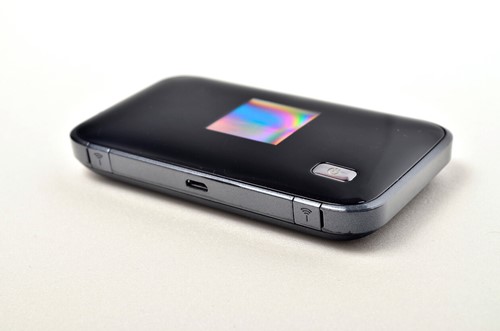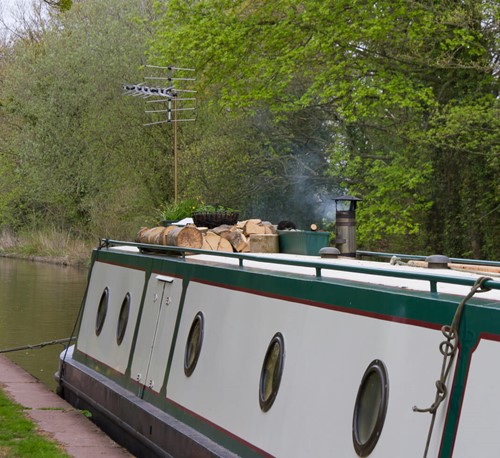Getting Wi-Fi on your narrowboat is a must in a world where the Internet is becoming just as important as running water.
This is especially true if you work from your narrowboat, use streaming services on your smart TV, or simply want to keep in contact with your family and friends.
We’ve covered all options for setting up the Internet on your narrowboat, from smartphone data to ultrafast Wi-Fi.
That way, you can decide what best suits your budget and data needs so that you won’t waste a penny investing in the wrong set-up.
Different narrowboat internet options
Understanding the options available is key to learning how to get Wi-Fi on your narrowboat. Read on to discover what’s best for you so you can get online in no time.
1. Mobile data via a smartphone

If you don’t rely on the Internet daily and have very little usage, you may consider using your current smartphone data plan.
This could work best for those moored in a location where the data is particularly strong, especially if they have a high or unlimited allowance.
However, this solution isn’t ideal for those who don’t want to be limited to one device and enjoy streaming media other than just digital terrestrial TV.
Another downside is that since most narrowboats are made from steel, they obstruct radio waves and interfere with your data signal. You may have to sit by the window to get a decent signal or even step outside the boat.
If you’re moored in an area with poor mobile and data signals for your network, you might struggle to contact anyone.
If getting Wi-Fi on your narrowboat is a priority, read on to learn how to install it.
Pros:
- No set-up (if you own a smartphone)
- No additional equipment required
- Cheapest option
Cons:
- Poor signal inside the boat
- Limited to one device
- Risk having no mobile or internet signal
Related: The 10 best narrowboat blogs in the UK
2. Mobile broadband

Mobile broadband on a narrowboat comes in the form of a MiFi device, essentially a mini router.
It works similarly to smartphone mobile data, yet it provides a signal across the boat or at least a portion of it.
So, if you opt for mobile broadband on your narrowboat, you’ll be able to access the Internet via other devices, such as your laptop or TV, as well as your smartphone.
However, the main setback is that the signal itself isn’t much of an improvement over smartphone data, as it can still be interrupted by the steel of the narrowboat.
Some boaters hang them outside of their windows to avoid signal loss. But this can be inconvenient when you’re cruising, and they’re not designed for outdoor use, so they could become damaged.
If you want to save money and don’t rely heavily on the Internet, this could be a viable solution for you, especially if you’re moored up for long periods.
Pros:
- Instant set up
- Can be used across multiple devices
- Cheaper than a router and antenna
Cons:
- Potential signal issues inside the boat
- Not as reliable as regular Wi-Fi
- You may need to position it near or outside a window
Related: Complete guide to fitting out a narrowboat
3. External antenna and router

If you have a high Internet usage, this is the best option for getting Wi-Fi on your narrowboat.
A router connected to an external antenna will give you access to the Internet in every corner of your narrowboat, as the steel won’t interfere with the signal.
It’s a good idea to shop around to find the best Internet provider for your needs, but more on this below.
What antenna should you buy?
There are two types of antennae: directional and omnidirectional.
Directional antennas typically pick up a stronger signal but can only receive it from the cell tower you’ve positioned them towards.
Plus, the signal will drop if this tower experiences any issues, such as downtime or heavy traffic.
They could work if you’re moored in a certain location for long periods and know the nearby cell towers provide a stable signal.
But if you’re a continuous cruiser, you may benefit more from an antenna that receives a signal from multiple sources.
That’s where omnidirectional antennas come in. They receive signals from 360 degrees and prioritise the nearest cell towers with the strongest signal. So, you’re improving the odds of a strong, stable signal.
In terms of mounting them on your narrowboat, a product like this KUMA magnetic pole mount would allow you to secure it to your narrowboat but also collapse it to avoid damage when travelling through bridges or tunnels.
If you forget to lay it flat, there’s still much less risk of damage than a standard mount, as the contact between the obstacle will likely knock it over rather than snap it.
Related: 17 funny narrowboat names to inspire you
What router should you go for?
An unlocked router is the best choice for narrowboat Wi-Fi, as if you have any issues with your chosen network, you can easily switch to another without being locked into a 12-month contract.
You won’t need to change your router when you switch. You’ll need to order a new SIM from a different network, and then you’ll be up and running again.
Here are a few examples of unlocked routers:
Ofcom has a broadband and mobile coverage checker if there’s a certain area you spend most of your time in.
However, if you’re a continuous cruiser, you should shop around and read reviews on each network and its overall performance in terms of signal across the UK.
It’s a good idea to try a one or two-month plan initially before entering into any form of contract, as you can perform a broadband speed test and gauge whether the network is adequate.
Here are some short-term SIM deals as a starting point:
Just check whether the SIM will work in your router, and you’re good to go.
Remember that 12-month or 24-month contracts are cheaper than short-term plans, but it’s worth spending a little extra initially to ensure you’re happy with the service.
Pros:
- Strong signal
- Closest to home Wi-Fi
- Can be used throughout the boat
Cons:
- Longer set-up process
- More expensive
- Need to collapse the antenna before entering tunnels
Specialist narrowboat insurance through Insure4Boats
Moving onto your narrowboat soon? You may want to consider specialist insurance to protect your boat and personal belongings.
At Insure4Boats, we arrange specialist narrowboat insurance that protects your boat against theft, accidental damage, malicious damage, and salvage charges.
Each policy comes with £3m Third Party Liability cover as standard, so you’re protected if someone makes a claim against you for damage or injury to their boat following an incident on the waterways.
Find out more about how we can help or click the button below to get an instant online quote.
Please note the information provided on this page should not be taken as advice and has been written as a matter of opinion. For more on insurance cover and policy wording, see our homepage.


